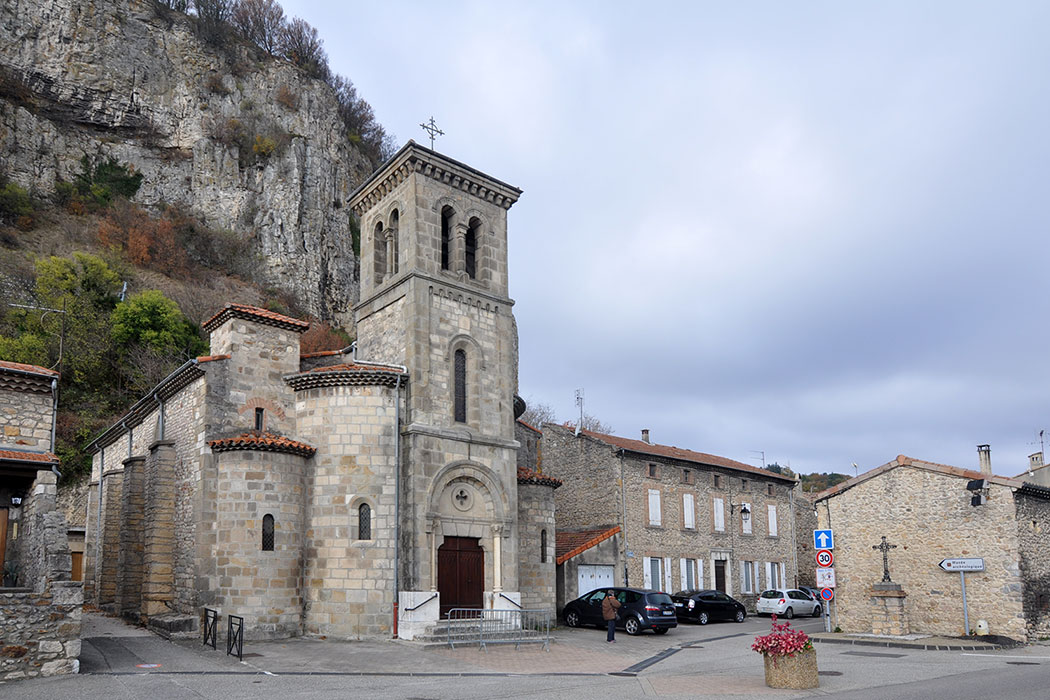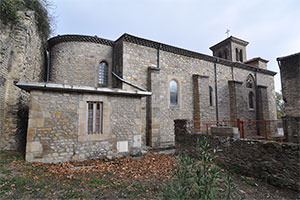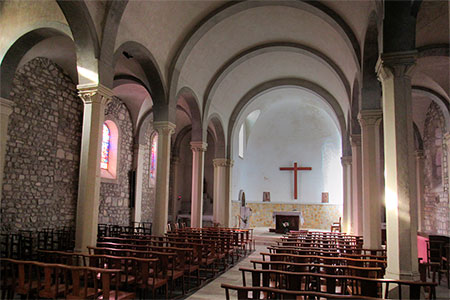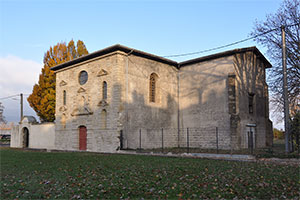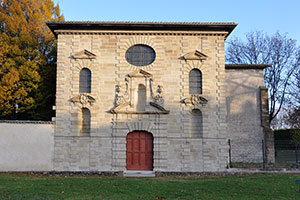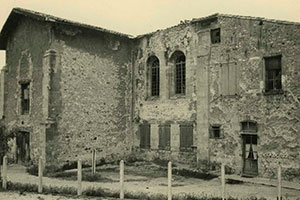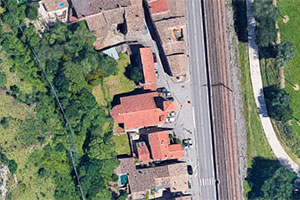The abbey of Saint-Jean l’Évangéliste, a house of Benedictine nuns, is thought to have been founded on an unknown date (perhaps in the 7th century) at Viviers, the seat of the ancient diocese of the same name. The nuns settled in the church of Notre-Dame du Rhône, near the tomb of Saint Venantius (c. 494–544), whose relics they were entrusted to guard. In 737, following a Saracen attack, the nuns were forced to abandon Viviers, taking the saint’s relics with them. The site fell into ruin and was never restored as a monastery.
The community moved to Soyons, but the first surviving document referring to this new house dates from 1179, mentioning the abbess of that period, Guillemette. In 1245 Abbess Bernarde and Philip of Savoy (bishop of Valence between 1241 and 1267) signed an agreement granting the bishop the seigneurial rights over Soyons in exchange for his protection of the monastery, something the female community, with its limited resources, could not ensure. Later, the monastery received protection privileges from several monarchs, from Louis IX to Louis XIII.
During the Wars of Religion, Soyons suffered from the instability that affected the region and the monastery itself. In 1562 the Huguenots attacked the abbey, forcing the community to flee and seek refuge in Valence, in private houses or in properties they owned there. By 1570 work had begun on restoring the monastery, although it was economically strained and lacked adequate security. In 1622 it suffered another sack, occupation and flight, during which only a few fragments of the relics of Saint Venantius could be saved.
In 1627 permission was granted for the community to relocate to Valence, where a new monastery was to be built. The monastery was integrated into the congregation of Chezal-Benoît and the nuns began to occupy it in 1633, the veneration of the relics of Saint Venantius was transferred there as well. The community remained until the Revolution decreed its suppression. In 1790 some nuns were allowed to leave the monastery, which was definitively closed in 1791, when the community numbered ten sisters. Once abandoned, the buildings were put to military use; a small part of the furnishings and what remained of the relics of Saint Venantius were later distributed among various churches in Valence.
The present church of Soyons is of ancient origin, with Carolingian elements and later modifications. It was heavily damaged during the Wars of Religion and underwent major 19th-century restoration works, including opening a main doorway in the central apse and building a new apse on the west side, thereby reversing the church’s orientation.
In Valence, the 17th-century monastic building still survives and has been restored.
- ANÒNIM (1882). Essai sur les origines monastiques dans le diocèse de Valence, l'abbaye royale de Saint-Jean l'Evangéliste de Soyons. Valence: Céas
- BESSE, J.-M.; i altres (1939). Abbayes et prieurés de l'ancienne France. Vol. 9: Province ecclésiastique de Vienne. Abbaye de Ligugé
- CHAMPION, Vincent (1863). Saint Venance, évêque de Viviers, sa vie, ses miracles, ses reliques. Valença: Nivoche
- COTTINEAU, Laurent-Henri (1939). Répertoire topo-bibliographique des abbayes et prieurés. Vol. 2. Mâcon: Protat
- MAZON, Albin (1888). Voyage autour de Crussol. Privas: I. Centrale
- NADAL, Joseph Cyprien (1855). Histoire hagiologique ou Vies des Saints et des Bienheureux du Diocèse de Valence. Valence: Aurel
- ROUCHIER, Jacques (1914). Histoire du Vivarais. Vol. 1. Largentière
- SAINT-JEAN, Robert (1991). Vivarais Gévaudan romans. La Pierre-qui-Vire: Zodiaque
- SAINT-MAUR, Congregació de (1865). Gallia Christiana in provincias ecclesiasticas distributa. Vol. 16. París: Firmin Didot
